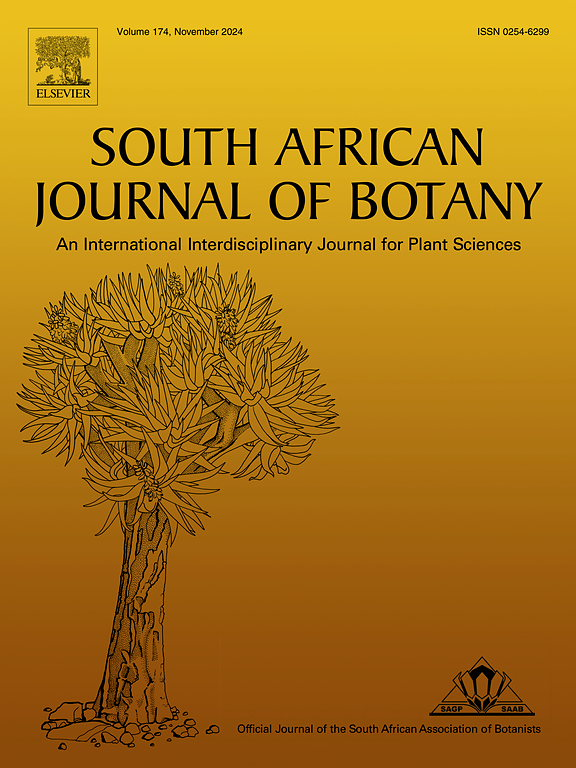From fruit to functional food: Eriobotrya japonica’s potential in managing obesity and Alzheimer's disease
IF 2.7
3区 生物学
Q2 PLANT SCIENCES
引用次数: 0
Abstract
Eriobotrya japonica (Thunb.) Lindl. (Eriobotrya japonica L.) commonly known as loquat, is a medicinal fruit with rich bioactive compounds that exhibit pharmacological potential. This study explores the anti-obesity and anti-Alzheimer's properties of E. japonica fruit extract through metabolomic profiling, molecular docking, and in vitro assays. Ultra-High Performance Liquid Chromatography coupled with High-Resolution Mass Spectrometry (UHPLC-HRMS) identified eight key bioactive compounds. Among them, hyperoside (C6) and afzelin (C8) demonstrated the strongest affinities in molecular docking studies, targeting key enzymes such as HMG-CoA reductase (HMGCR) (-9.1 kcal/mol) and Acetylcholinesterase (AChE) (-10.7 kcal/mol). In vitro enzymatic assays confirmed significant inhibitory activities. Afzelin (C8) and Hyperoside (C6) exhibited potent anti-Alzheimer's activity with an EC₅₀ of 26.11 mg/mL, while afzelin had an EC₅₀ of 21.61 mg/mL, comparable to physostigmine (EC₅₀ = 21.48 mg/mL). For anti-obesity effects, hyperoside (C6) showed an EC₅₀ of 25.46 mg/mL, while afzelin (C8) exhibited a more potent effect (EC₅₀ = 21.66 mg/mL), outperforming the commercial inhibitor orlistat (EC₅₀ = 23.14 mg/mL). These findings highlight the potential of E. japonica as a natural source for developing functional food and therapeutic agents targeting obesity and Alzheimer's disease. Further in vivo and clinical investigations are recommended to validate these promising results.

求助全文
约1分钟内获得全文
求助全文
来源期刊

South African Journal of Botany
生物-植物科学
CiteScore
5.20
自引率
9.70%
发文量
709
审稿时长
61 days
期刊介绍:
The South African Journal of Botany publishes original papers that deal with the classification, biodiversity, morphology, physiology, molecular biology, ecology, biotechnology, ethnobotany and other botanically related aspects of species that are of importance to southern Africa. Manuscripts dealing with significant new findings on other species of the world and general botanical principles will also be considered and are encouraged.
 求助内容:
求助内容: 应助结果提醒方式:
应助结果提醒方式:


